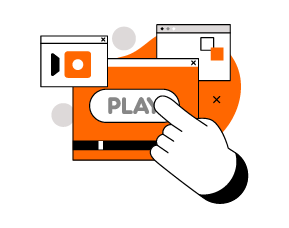Creating impact is fraught with danger. For one, we could find out that what we’ve been doing isn’t working. That would look bad! It also means we have to stand up to our stakeholders a bit and argue that we can’t just do ‘school’, and that it could take a bit longer and cost a bit more. Heck, they don’t care what we do anyway, so why bother? So how do we ensure that we’re not having an impact, and stay in our comfort zone?
Take orders

We should continue to build the courses our customers ask for. If they trust us to build them, why would we want to challenge that? Certainly, we know how to take PowerPoints and PDFs, put them up in a system, and add a quiz. We’re very efficient at it; it’s what our tools and processes are aligned to. Who cares whether anything actually changes? Certainly, our stakeholders don’t seem to.
Do info dump

We should also trust our subject matter experts. If they tell us folks need to know X, Y, and Z, we should oblige. Who are we to question them? Just because the way our brains work means as we become experts, we lose access to what we actually do isn’t our concern. If they learned from this knowledge, we should oblige. People always change their behavior as soon as they have new information, right?
Sizzle over steak

We really don’t need any fancier design than that. Sure, branching scenarios are fun, and we can throw in a few. We can tell stories too, people like that. We definitely have to make it look good. We know how to make things flashy; we’ve got graphic designers for just that reason. We also are always chasing the latest fancy tech, so we can say we’re doing video, VR, and now AI. It looks good, and people like it; that’s all that matters!
Avoid testing!

One thing we definitely have to avoid is any form of testing. Heck, asking people if they liked it is level 1, so we’re starting somewhere, right? In the very worst case, we can test that knowledge. We don’t have to go so far as to see if their behavior has actually changed and led to new results; we follow the steps, so the outcome has to be good! Let’s just ask random questions to either see if they happened to notice that one thing or make them go back and find it.
With these sensible steps, we can continue to exist in our comfort zone, believing that we’re -having an impact. Actually, evaluating impact, let alone design for it? That’s just crazy talk.
In summary, resisting the discomfort of learning impact might seem easier, but it stifles progress. Embrace change, challenge norms, and step into proactive design. To explore this further, download our eBook, Designing for Learning Impact: Strategies and Implementation, for insights into elevating your learning initiatives. Break free from the ordinary, and let impactful design lead the way to genuine change.
















